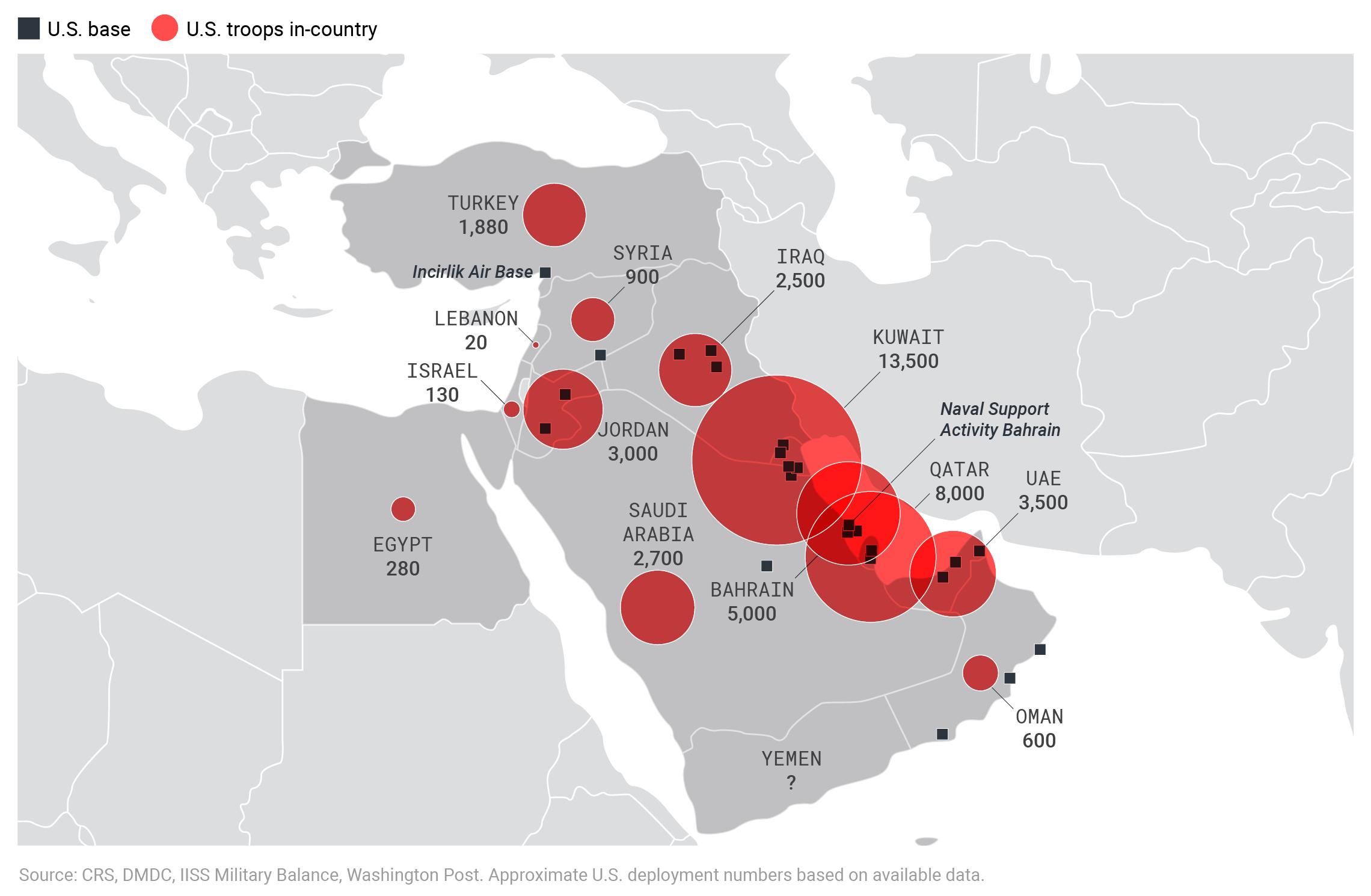Military Bases Georgia Map - The US Air Force is working to increase the number of strategic bomber bases capable of hosting nuclear weapons from today to five by 2030.
By 2030, the plan would significantly expand the number of bomber bases stocking nuclear cruise missiles, from one base today to all five bomber bases.
Military Bases Georgia Map

This is an extension of the decision to replace the non-nuclear B-1B bombers at Ellsworth AFB and Dyess AFB with nuclear B-21s over the next decade and a half and restore nuclear weapons storage capacity at Barksdale AFB. too
Like America, The Sunshine State Also Rises
The expansion is not supposed to increase the total number of nuclear weapons assigned to the bomber force, but to expand infrastructure to "accommodate the growth of the mission," Air Force Global Strike Command commander Gen. Timothy Wray told Congress last year.
The Air Force announced in May 2018 that the B-21 will replace the B-1B and B-2A bombers and will be deployed at Ellsworth AFB, Dyess AFB and Whiteman AFB. The Commander of the Strategic Bomber Force later explained in a video address to the B-1B base that "the B-21 will bring significant changes in every area, including a realignment of nuclear mission requirements."
The B-2A replaced the B-1B in the nuclear warfare program in 1997, and all B-1B bombers were denuclearized in 2011, the result of the B-21 bomber program is that nuclear bomber operations at the three bases are increasing. Five basics from today to the future (see the map):
The Air Force plans to expand nuclear storage capacity at the bomber base from two to five in the future. Click on the map to view full size.
Why Nato Has Become A Flash Point With Russia In Ukraine
The Air Force previously planned for the B-21 to replace the B-2A after 2032 and the B-1B after 2036, although those dates have since changed.
The consolidation of the B-21 will result in an increase in stealth nuclear bomber bases from one today (Whitman AFB) to three in the future.
The modernization plan also looks to significantly expand the deployment of nuclear cruise missiles from one base today (Minot AFB) to all five bomber bases by the late 2030s. LRSO to start entering the arsenal in 2030 (see table):

The US Air Force plans a significant expansion of nuclear bomb bases and capabilities. Click on the table to view full size.
Purple Star Schools
A key component of the base upgrade to operate the B-21 involves building a new nuclear weapons storage facility at each base: a Weapons Manufacturing Facility (WGF). The new facility differs from the weapons storage areas (WSAs) built by the Air Force during the Cold War in that it will combine maintenance and storage missions together in the same facility. The WGF will have an area of approximately 35 square meters and a building of approximately 52,000 square feet (4,860 square meters) as well as a munitions maintenance building of 17,600 square feet. The Air Force says the WGF will be "unique to the B-21 mission" and designed to provide "a safer and more secure location for Air Force nuclear munitions storage."
A draft environmental impact statement released by the Air Force shows the location of planned nuclear weapons storage facilities at Dias and Ellsworth Air Force Base. At Dyess AFB, the facility is planned to be built at the north end of the base near the existing ammunition depot (see map below):
The Air Force plans to add nuclear weapons storage capacity at Dyess Air Force Base in Texas. Click on the map to view full size.
At Ellsworth AFB, the Air Force has identified two preferred locations: one on the north end near the ammunition depot, and one on the south end near the aircraft alert apron (see map below):
Tracking Covid 19 Urban Activity Changes In The Middle East From Nighttime Lights
The Air Force plans to add nuclear weapons storage capacity at Ellsworth Air Force Base in South Dakota. Click on the map to view full size.
Although Barksdale AFB will not receive the B-21, preparations are underway to restore nuclear weapons storage capacity at the base. That capability was lost last decade when the Air Force consolidated the operational nuclear ALCM depot at Minot AFB. Once completed, the new WGF will allow the base to store LRSO nuclear cruise missiles for delivery by B-52s.
The B-21 bomber program is expected to increase the overall size of the US strategic bomber force. The Air Force currently operates 158 bombers (62 B-1B, 20 B-2A, and 76 B-52H) and plans to acquire at least 100 B-21 bombers. That number now [https://www.airforcemag.com/article/strategy-policy-9/] appears to be at least 145, which would increase the total bomber force by 62 bombers to around 220. There are currently nine bomber squadrons , the Air Force wants to increase to 14 (each base has more than one squadron).
During an interview with reporters in April, the head of the AFGSC, Gen. Timothy Wray, said the number of 220 was "a minimum, not a ceiling" and added: "We as an Air Force now believe it is more than 220 ." Whether Congress will agree to pay for that many B-21s remains to be seen.
Armenia, Azerbaijan And Georgia's Balancing Act Over Russia's War In Ukraine
Fielding a large number of nuclear-capable B-21 bombers has implications for the future development of US nuclear weapons. According to the New START treaty, the United States declares that it will not deploy more than 60 nuclear bombs. Although the agreement expires in 2026 (after a maximum extension of five years), it is the basis for long-term planning of the nuclear power structure.
If the Air Force does not limit the number of nuclear-equipped B-21 bombers to the number of B-2As operating today, by 2028 the number of nuclear bombers will begin to exceed the promised 60 deployed nuclear bombers (assuming annual production of nine) . aircraft and a two-year delay in the deployment of the first nuclear unit). By 2035, the number of nuclear bombs deployed would double from today (see graph below):
Unless the B-21 nuclear bombs are limited, the nuclear bomb force of the future could exceed the bomb force under the current New START Treaty. Click on the graph to view full size.
Without New Start - it is difficult to imagine a military justification for such an increase in the number of nuclear bombs. One hopes that the number of nuclear B-21s will be limited to a much smaller total number. Even if the New START treaty were to expire before it became a legal issue, it would send the wrong message to other nuclear-armed states about America's long-term intentions, raise suspicions and could complicate the "great power competition," with the weapons future dispute control.
Mapping Ukraine And Russia On The Edge Of War
In the short term, the incoming Biden administration should commit the United States not to increase the number of nuclear bombs planned under the New START treaty and encourage Russia to make a similar announcement about the size of its nuclear bomb force.
John D. and Catherine T. This publication is made possible by generous contributions from the MacArthur Foundation, the New Land Foundation, the Plowshares Fund, and the Prospect Hill Foundation. Statements made and opinions expressed are solely the responsibility of the authors. United States military service members across the country may have been exposed to environmental hazards while stationed at certain military bases. Many toxic chemicals present in these bases have been linked to health problems. If you have a medical problem after service, you may qualify for disability compensation through the Department of Veterans Affairs.
United States Here's what veterans should know about potential toxic exposures on military bases and about filing disability claims for VA benefits.
/cloudfront-us-east-1.images.arcpublishing.com/gray/HNFE2DSPH5FXTM27XSKIL2JHNY.jpg)
The Environmental Protection Agency (EPA) began the "Superfund" program in 1980 when Congress enacted the Comprehensive Environmental Response, Compensation and Responsibility Act (CERCLA). This program is an effort to clean up land considered by the EPA to be contaminated with hazardous waste and to pose a risk to human health and/or the environment. Superfund sites are found around the world because of the United States' presence in many countries through private business, government, and military programs. Determining whether a site should be considered a Superfund site is a complex assessment. Assessments include looking at the types of toxins; if toxic substances are found in soil, water, air or sediment; And at what stage of cleaning the site already. The main toxins assessed by the EPA are asbestos, dioxin, lead, polychlorinated biphenyls (PCBs), and radiation.
Five State I 14 Designation Now Final With Infrastructure Bill
Presumptive conditions are health problems that the VA has linked to a particular type of military service. For example, the VA assumes that Vietnam War veterans with certain conditions, such as chronic B-cell leukemia and non-Hodgkin's lymphoma, were exposed to Agent Orange. This means they are automatically eligible for disability benefits. VA has a similar situation for Gulf War veterans.
The VA already authorizes some presumptive benefits for veterans stationed for certain periods at Fort McClellan in Alabama and Camp Lejeune in North Carolina. Veterans stationed at these bases may have been exposed to many toxins through contaminated water, which can have serious health effects. It also has assumptions
Military bases in georgia map, georgia military bases army, us military bases map, australian military bases map, georgia army bases map, georgia military bases, us military bases in georgia, georgia military bases map, military bases in georgia, iraq map military bases, map of military bases, okinawa map military bases

0 Comments